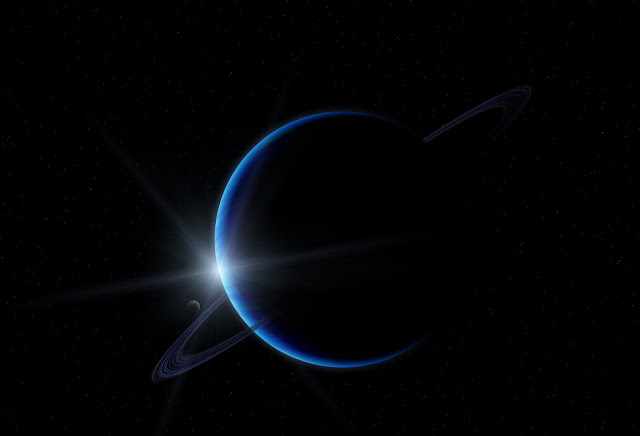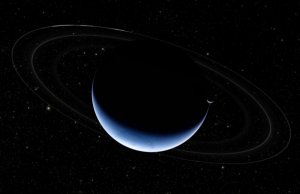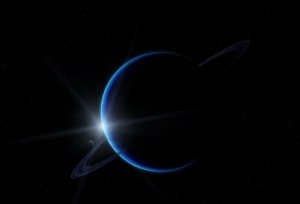

Planets, like stars, are incredibly diverse, existing in all different sizes and classifications. Of course, we have small planets (like Mercury and Mars), large planets (think Jupiter and Saturn), and planets that lie within the happy medium. Earth is one of those planets, but it’s still on the smaller end of the spectrum. Beyond Earth, we have mega and super-Earths. Beyond them, we have medium-sized gas giants, like Neptune and Uranus — planets composed mostly of gas that lurk within the icy confines of the outer solar system. They, however, seem to be a rarity. By far, the larger planets seem to outnumber the small (though admittedly, the larger the planet, the easier it is to find).
Now, an international team of researchers — led by Radek Polesky, from the Ohio State University — have seen a semblance of home in a far away planetary system situated more than 25,000 light-years from Earth. The planet — which, as they describe it, is part gas and part ice — shares many attributes of both of our ice giants.
In fact, this planet is purportedly their twin (minus the fact that it’s about four times heavier), but given the vast distances involved, there are some holes in our knowledge. Namely, we have no idea what this planet’s atmosphere is composed of. With Neptune and Uranus, the large concentration of methane in responsible for their signature blue hue, therefore, the new planet might not resemble them in color (also no word on whether or not it rains diamond). However, we do know one very important thing; how far it is from its parent star. The distance is said to be identical to that separating Uranus and the Sun.

Oh, and further complicating the system’s dynamics, this newly-discovered planet orbits a star that orbits another star (meaning, this is a binary star system with an orbiting planet). The first star is about 2/3rds as massive as the Sun, while the second is much smaller, weighing just a sixth of the mass of the Sun. It, however, is still close enough to perturb the ice-giant’s orbit, throwing a wrench in its delicate orbital dance.
According to Andrew Gould, a professor of astronomy at Ohio State University, the importance of this planet’s discovery is two-fold. It might also help solve integral mysteries about the outermost ice giants of our solar system. He explains,
“Nobody knows for sure why Uranus and Neptune are located on the outskirts of our solar system, when our models suggest that they should have formed closer to the sun,” Gould continued. “One idea is that they did form much closer, but were jostled around by Jupiter and Saturn and knocked farther out.” (This same phenomenon could have ejected a now-rogue planet that once belonged to our solar system)
“Maybe the existence of this Uranus-like planet is connected to interference from the second star,” he finished. “Maybe you need some kind of jostling to make planets like Uranus and Neptune.”
The Ohio State University also divulges how the discovery was made:
The astronomers spotted the solar system due to a phenomenon called gravitational microlensing—when the gravity of a star focuses the light from a more distant star and magnifies it like a lens. Very rarely, the signature of a planet orbiting the lens star appears within that magnified light signal.
In this case, there were two separate microlensing events, one in 2008 that revealed the main star and suggested the presence of the planet, and one in 2010 that confirmed the presence of the planet and revealed the second star. Both observations were done with the 1.3-meter Warsaw Telescope at Las Campanas Observatory in Chile as part of the Optical Gravitational Lensing Experiment (OGLE).
Poleski led the analysis, which entailed combining the two OGLE observations. When he did, he was able to calculate the masses of the two stars and the planet, and their distances from one another—a feat that he says can only be done via microlensing.
“Only microlensing can detect these cold ice giants that, like Uranus and Neptune, are far away from their host stars. This discovery demonstrates that microlensing is capable of discovering planets in very wide orbits,” Poleski said.
“We were lucky to see the signal from the planet, its host star, and the companion star. If the orientation had been different, we would have seen only the planet, and we probably would have called it a free-floating planet,” he added.
Read the full press release here.
This article is listed under a Creative Commons Attribution-NonCommercial-ShareAlike 4.0 International License. However, FQTQ does not own the rights to the images that are attached.. Learn more about our republishing policy here.